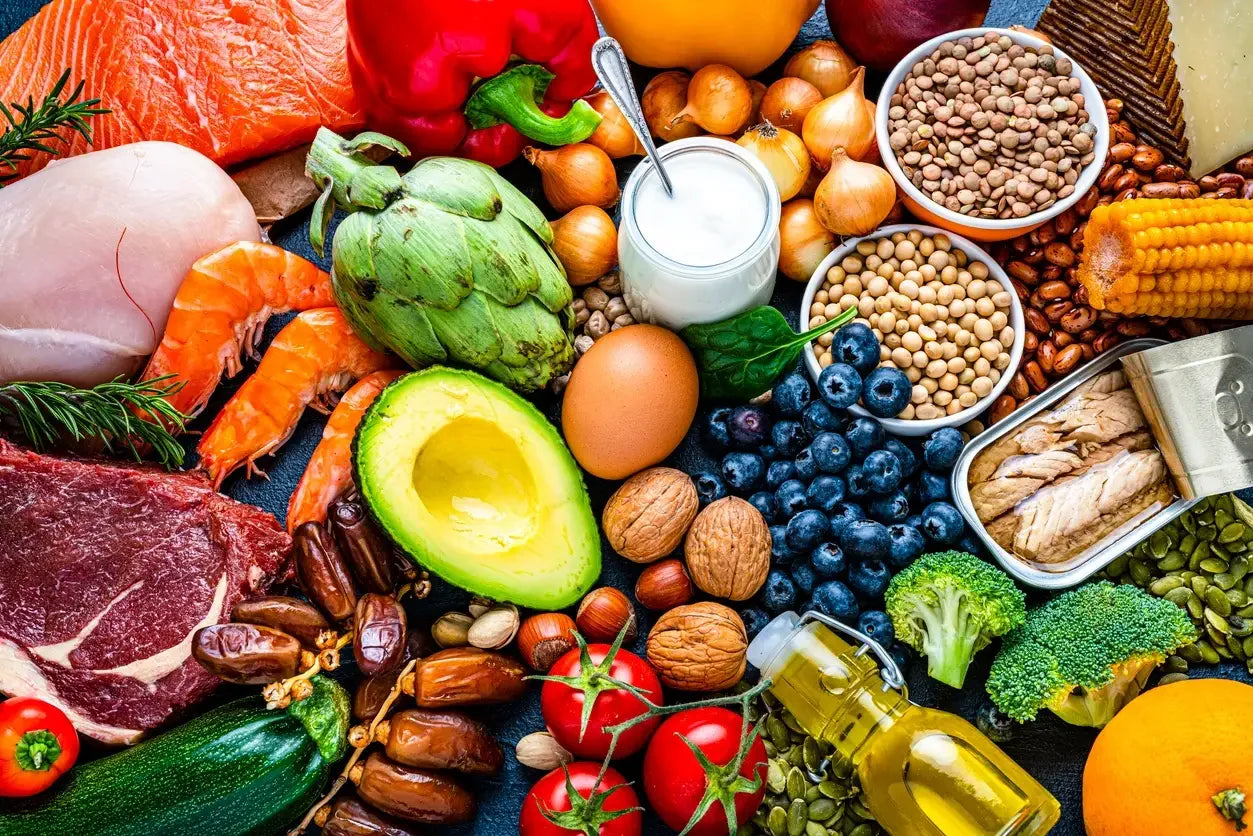02
What are the best foods to aid in skin repair?
#1 Fatty fish, such as herring, tuna, and salmonThese types of oily fish provide high amounts of omega-3 fatty acids, which help reduce inflammation, while a lack of omega-3s can cause dry skin. Fatty fish also offer high-quality fats, vitamin E (an antioxidant great for your skin), and protein. Cook these foods thoroughly and serve on a leafy green salad with avocados and walnuts for a power-packed, skin-healthy lunch [2].#2 AvocadosIf you want a food that provides healthy fats and anti-inflammatory nutrients, avocados are a sure bet. A study of 700 women found that eating avocados can lead to soft and supple skin. Compounds in avocados may also offer some protection from the effects of UV rays. The essential fats can help support skin elasticity and keep skin feeling soft to the touch. Toss this healthy fat into a salad, slice onto a sandwich, or blend into a green smoothie every day.#3 WalnutsLike salmon, these nuts are great sources of omega-3 fatty acids. One of the best longevity foods , walnuts contain zinc, selenium, and vitamin E, all of which can help your skin stay soft and supple. Walnuts make an easy, crunchy and nutrient-packed topping to many meals. Toss a handful onto that tasty salmon salad with avocados for a quick and satisfying skin-healthy lunch.#4 Red or yellow bell peppersBoth of these tasty peppers contain copious amounts of beta carotene, which turns into vitamin A once your body digests them. One cup provides 156% of your daily supply of vitamin A. These peppers are also high in vitamin C, which is necessary for your body’s collagen production. Dice up a bell pepper and mix into a salad with avocados, sunflowers, and maybe even tomatoes.#5 TomatoesThese tasty foods contain large amounts of vitamin C as well as carotenoids, such as lycopene, which give the tomato its red color. Beta carotene, lycopene, and lutein in tomatoes team up to protect your skin from sun damage and they may even prevent wrinkles.#6 Sweet potatoesThat dark orange color of sweet potatoes is the key to their nutrient profile because, like carrots, sweet potatoes contain beta carotene, which turns into vitamin A after you consume . Consider pumpkin and carrots for an additional vitamin A boost. Have baked sweet potatoes as a side with a healthy portion of quality protein and a salad with leafy greens, tomatoes, walnuts, and peppers.#7 Sunflower seedsPour some on your salad to soak up vitamin E, selenium, zinc, and protein, all of which help your skin. In general, nuts and seeds are great choices for nourishing your skin cells .#8 BroccoliThis superfood contains high amounts of zinc, vitamin A, and vitamin C, all of which help your skin maintain its healthy glow. Like tomatoes, broccoli also contains lutein, a substance that protects your skin cells against oxidative damage, which can cause dry skin. Steam some broccoli and have it as a side vegetable with high-quality protein and some sweet potatoes.#9 Green teaYou’ve heard a lot about green tea and its antioxidants. But did you know it’s great for your skin? Put away those diet sodas and drink green tea if you need a caffeine boost. The catechins in green tea protect your skin against sun damage. One study even found that green tea reduced redness from sunburn by 25 percent while improving moisture, roughness, thickness, and skin elasticity. Pair this delicious habit with a peptide moisturizer as part of your skincare routine and you are set!#10 SoyEat tofu, edamame, and soy milk to augment your intake of soy. Not only do you receive plant-based protein, but the isoflavones in soy can reduce wrinkles and improve elasticity in your skin. For older women, soy can reduce dryness and increase collagen production.



